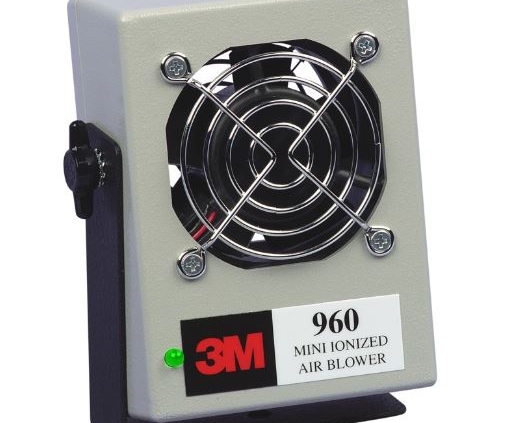Relative Humidity Control
Humidity control is important for an effective ESD program for two primary reasons;
At lower humidity levels (< 30% RH), the dissipation of commonly generated static charges does not take place, thus adding to the probability of ESD events.
Materials (such as pink poly) rely on the moisture in the air to combine with the material’s antistatic agent to form a microscopic conductive layer over the entire surface of the material. At lower humidity, (typically below 15% RH) these antistatic materials can become charged, creating an ESD hazard.
The optimum relative humidity in an EPA is 50% (plus or minus 10%).
When humidity falls below 30% RH, ESDS devices and assemblies shall be processed using special controls and procedures such as air ionization and increased awareness of the greater potential for triboelectric charging. The Facility ESD Monitor must verify the humidity prior to each shift or operation if work is not shift based unless an automatic low humidity alarm system is monitoring the work area. It is highly recommended that facility air handlers include automatic humidifiers to maintain humidity control. EPAs shall control relative humidity within a range of 30 to 70 percent relative humidity.
Air Ionizers
Air ionizers can neutralize the static charge on insulators or isolated objects by charging the molecules of the surrounding area that causes the accumulated charge to be neutralized. Air ionizers are generally used when it is not possible to properly ground everything at the workstation using previously described methods and equipment or as a back up to those methods.
As an example, most adhesive tapes are nonconductors and would require an ionizer to neutralize the charge on the tape if used in close proximity to ESDS devices. An ionizer shall be used at all, times when work is being performed in a Class 1 facility and must be available for use when needed in a Class 2 facility. Ionizers are specifically required for use in some manufacturing operations that generate static charges such as vapor degreasing, vacuum packing, spraying conformal coating, wave soldering, and the use of pressurized air guns. In addition, ionizers are a recognized static charge deterrent when humidity falls below 30 % RH. Any part sensitive to damage below 250 volts requires that an ionizer be used any time the part is removed from its ESDS packaging. Calibration of the air ionizer to verify balance and performance is required.




Leave a Reply
Want to join the discussion?Feel free to contribute!